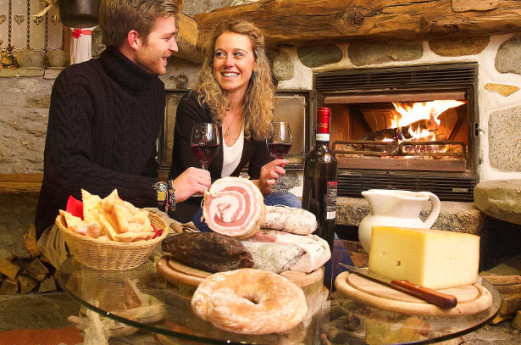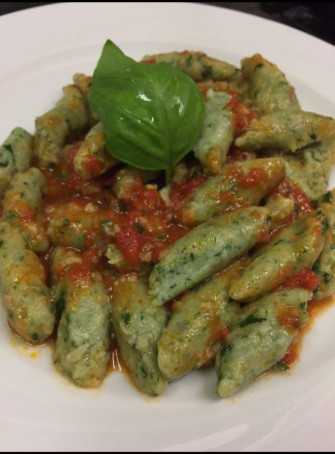- Food & Wine
Bergamo, hunting for flavors
Valleys of extraordinary beauty, like the city that looks at them from the walls. Wines, cheeses, pasta.
Wine folk by decree and cheesemakers by passion, the people of these valleys love the mountains, which are the perfect environment for creating super cheeses which positively exude the smells of the pastures.
Destiny among the vines. In 1266, a decree ordered all Bergamo inhabitants with at least three Perticas of land to plant vines, giving rise to the region’s ancient winemaking traditions. The region’s capital is a city of unique beauty: don’t miss out on a stroll through its historic centre, balanced on top of a hill and surrounded by ancient walls, and a visit to the Castello di San Vigilio.
In the Prealps area the land is full of gardens growing endives, while the mountains are home to pastures populated by cows throughout the summer. The animals roam freely on the land, taking in the clean air and eating the mountain grass and fragrant flowers, injecting extra flavour into the milk and cheese they produce. Nine local cheeses have been awarded DOP certification, but Formai de Mut (which means mountain pasture in Bergamo dialect) from Alta Valle Brembana is one of the best loved. The mountains are crisscrossed by a tight network of well-signposted paths, which mean you can explore the entirety of the Bergamesque Alps. It’s the perfect day out regardless of whether it’s summer or winter, for sport or relaxation.
Bergamo cuisine is all about substance and flavour, with simple ingredients used and great attention shown to the raw ingredients. Casoncelli are discs of pasta stuffed with minced beef and pork and served with melted butter infused with sage and pancetta, are the most popular dish. But don’t forget the delicious cured meats, such as Salame della Bergamasca, salsiccia and cotechino.
Two wines you can’t afford to miss out on during your visit is Valcalepio DOC, a red wine produced with Merlot and Cabernet Sauvignon grapes, and Moscato di Scanzo and red dessert wine which is produced only on the hills of Scanzorosciate, making it Italy’s smallest DOCG-certified area! The grapes are harvested late and left to dry for 40 days, with the wine itself then aged for two years in the bottle.





















